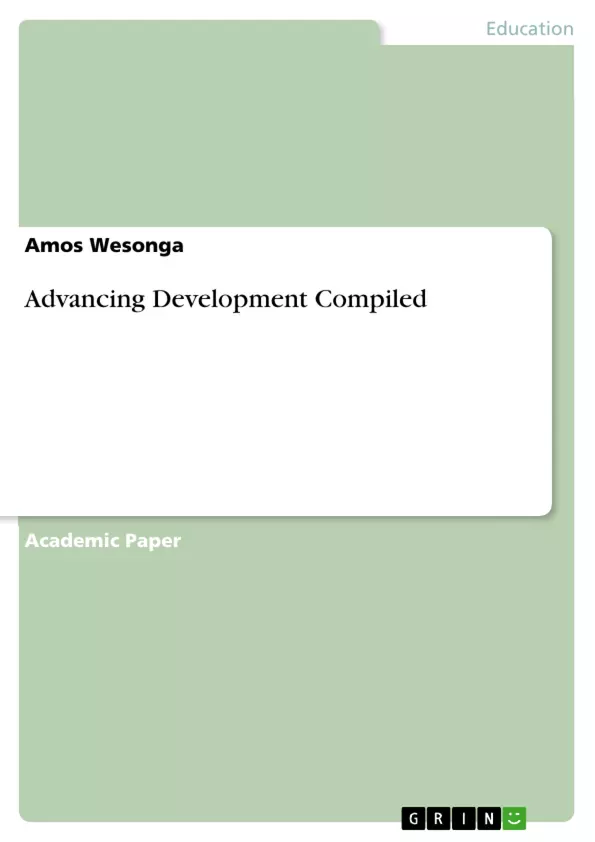Physical development in childhood refers to a period within which a child’s physical body capacity undergoes numerous transformations regarding growth and maturity. This stage begins at infancy and proceeds all the way to adolescence. Physical development is categorized into several steps from the birth of a child up to around 12 years of age. The sessions include Infancy stage. It takes place in the first few weeks and months in a child's life. At this time, movements of a child are involuntary. The child is capable of reacting to sounds, change in position; they can grasp objects which come into contact with their body. At around six months a child should begin to develop a simple primary difference in hearing, seeing and touching. As a child approaches one year, they should be able to hold up their head without assistance; they also sit or crawl, and even with small objects on the ground. The child now enters into a stage of toddling, which begins at the age of one year and progresses up to three years of age. At this development stage, the child is now able to control the hands and legs adequately and should be able to walk alone, be able to carry a cup, be in a position to ride a tricycle and even construct block tower. Towards the age of eighteen months, a child has already developed physical independence and can crawl upstairs or walk without falling and also draw lines on paper. As they attain two years of age, they can manage to run up and down of the stairs. The third stage of development is the age of pre-schooling. It runs up to the age of six years, and during this period, a child has attained physical abilities like skipping, hopping. They also climb, use spoons and forks, and even draw a picture. At this stage, a child should now be able to carefully handle their toileting needs, since a potty training has already been passed to them. The last step of physical development in childhood is the school-aged period. It begins at the age of six years up to about twelve years. At this stage, the physical movements of the child are more coordinated, and they can respond very positively to changes in their environment. The child has a steady eye and hand coordination and can, therefore, perform tasks such as playing soccer, basketball, hiking, riding a bicycle without support and swimming.
Inhaltsverzeichnis (Table of Contents)
- Emotional Development
- Adolescents
- Physical Development in Childhood
- Infancy Stage
- Toddling Stage
- Pre-Schooling Stage
- School-Aged Period
- Potty Training
- Physical Development Issues
- Childhood Nutrition
- Parenting Factor
- Environmental Factor
- Common Problems Affecting Physical Development
Zielsetzung und Themenschwerpunkte (Objectives and Key Themes)
This study explores the emotional development of children aged five years and below. It delves into the interplay between children's emotions, their physical reactions, and environmental influences. Additionally, it examines the role of caregiver relationships in shaping emotional development. The study also addresses potential problems and offers recommendations for promoting healthy emotional growth in young children.
- The connection between children's emotions, physical reactions, and environmental influences.
- The impact of environmental encounters on children's emotional transitions.
- The relationship between caregiver-child interactions and emotional development.
- Risk factors affecting emotional development in children, including environmental factors and family issues.
- The influence of race and ethnicity on emotional development.
Zusammenfassung der Kapitel (Chapter Summaries)
- Emotional Development: This chapter examines the multifaceted nature of emotional development in young children, highlighting the interplay between their emotions, physical reactions, and the surrounding environment.
- Physical Development in Childhood: This section explores the different stages of physical development in childhood, from infancy to the school-aged period, emphasizing the milestones and skills children acquire during each phase.
- Potty Training: This chapter provides a detailed guide to potty training, outlining the steps involved, signs of readiness in children, and the importance of positive reinforcement.
- Physical Development Issues: This section discusses crucial factors influencing a child's physical growth and development, including nutrition, parenting, and the environment.
- Common Problems Affecting Physical Development: This chapter examines common issues that can hinder a child's physical development, such as malnutrition, hereditary problems, and other factors that may impact their physical skills.
Schlüsselwörter (Keywords)
The study focuses on key terms such as emotional development, environmental influences, caregiver relationships, physical development, potty training, childhood nutrition, parenting factors, and risk factors affecting children's growth and well-being.
- Quote paper
- Dr. Amos Wesonga (Author), 2017, Advancing Development Compiled, Munich, GRIN Verlag, https://www.grin.com/document/439517



